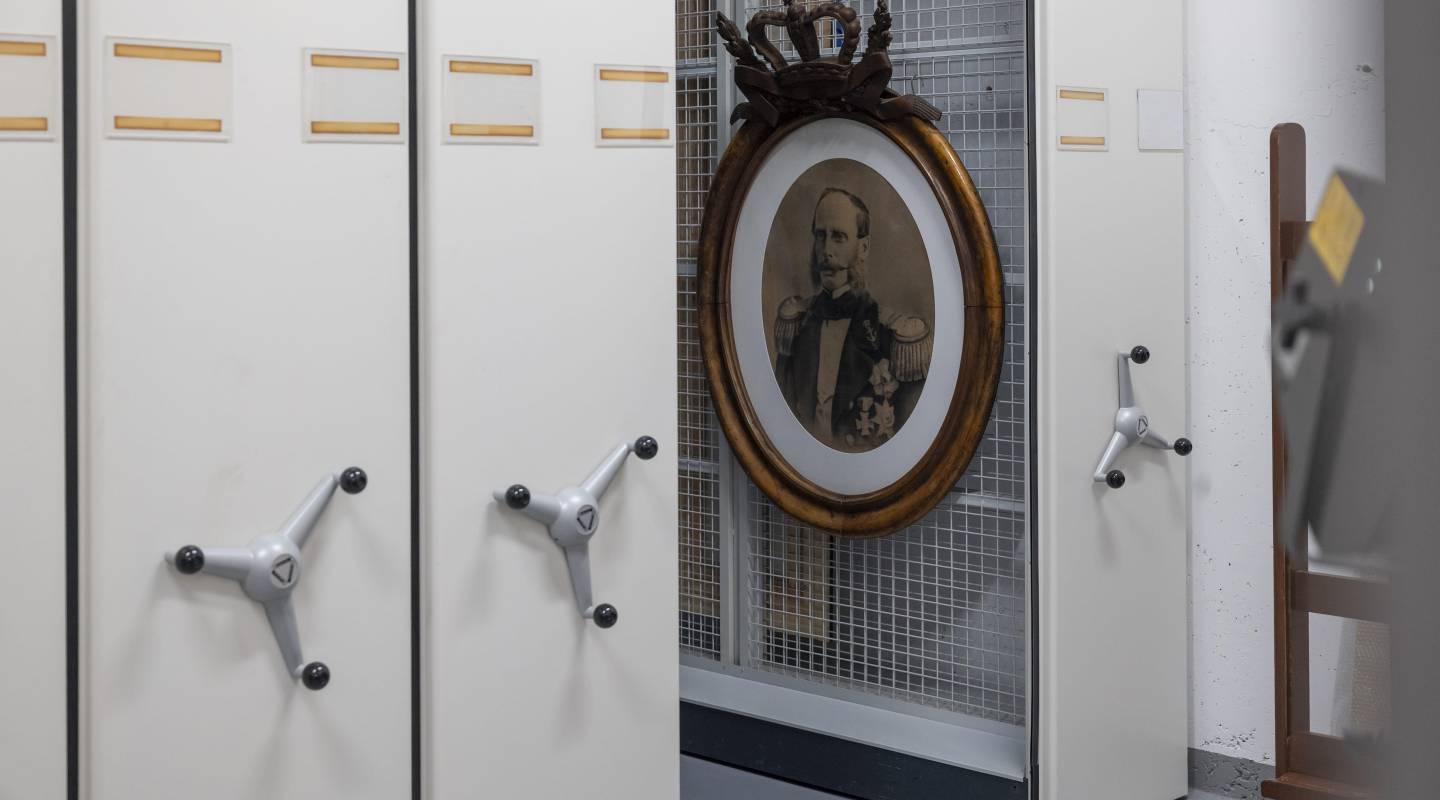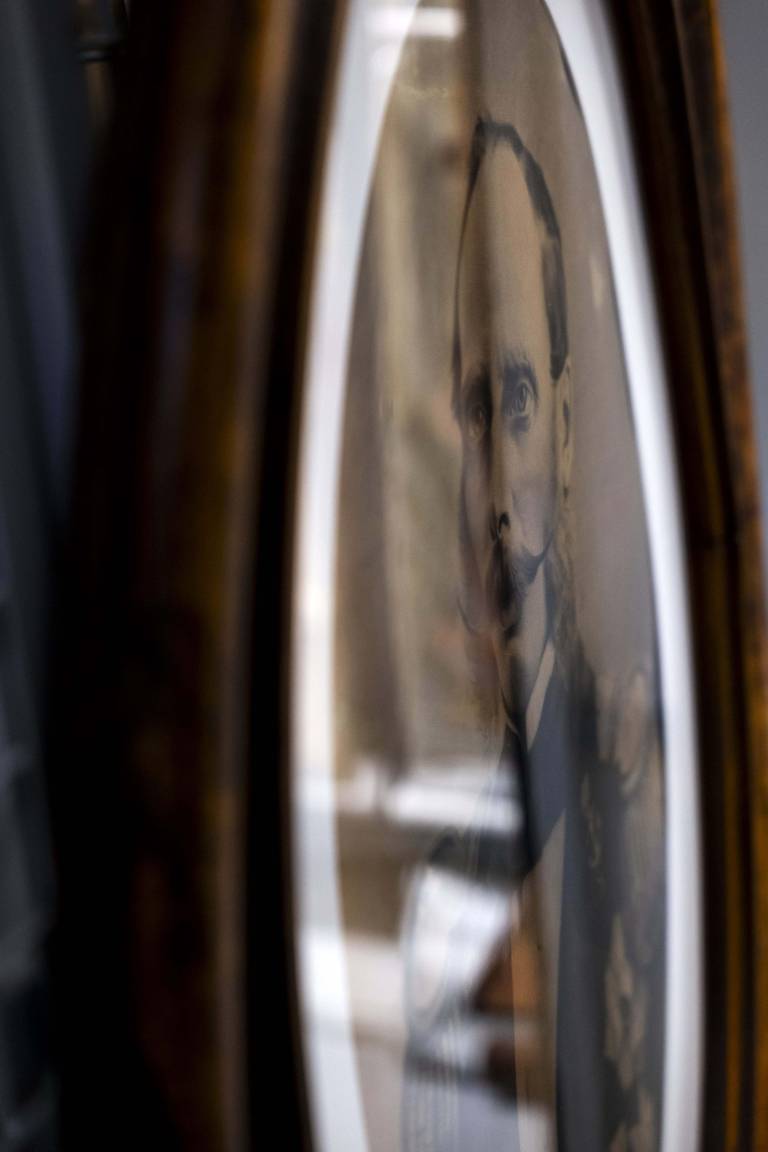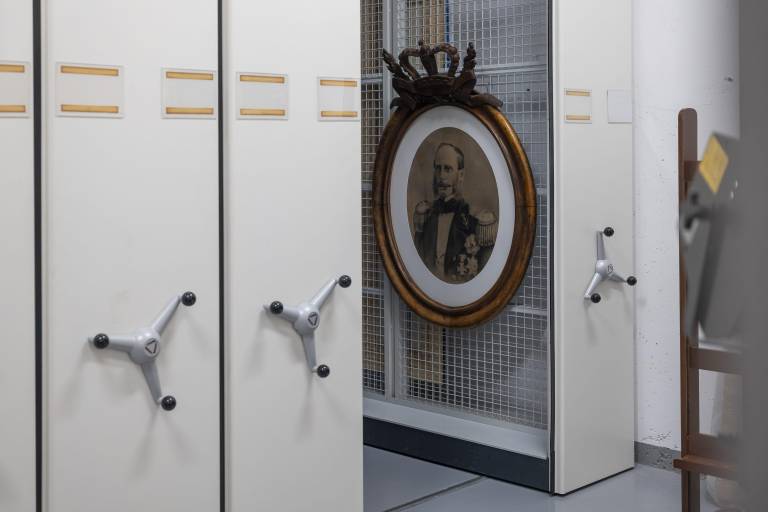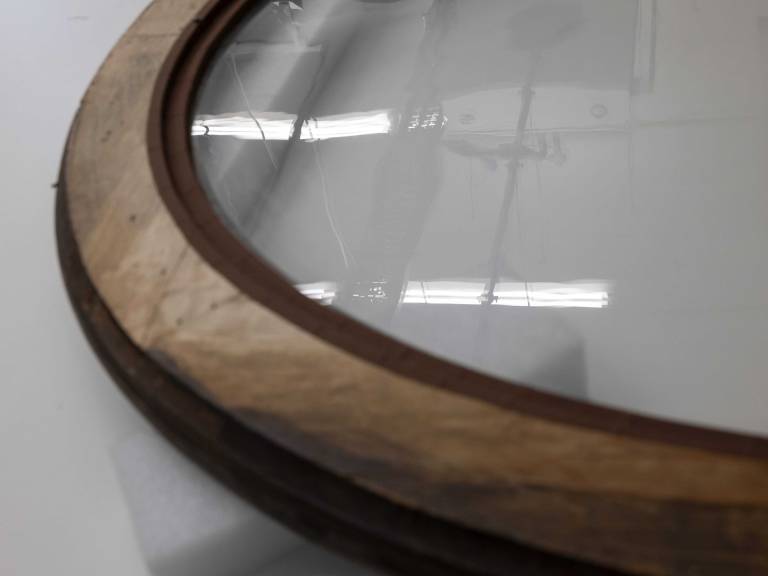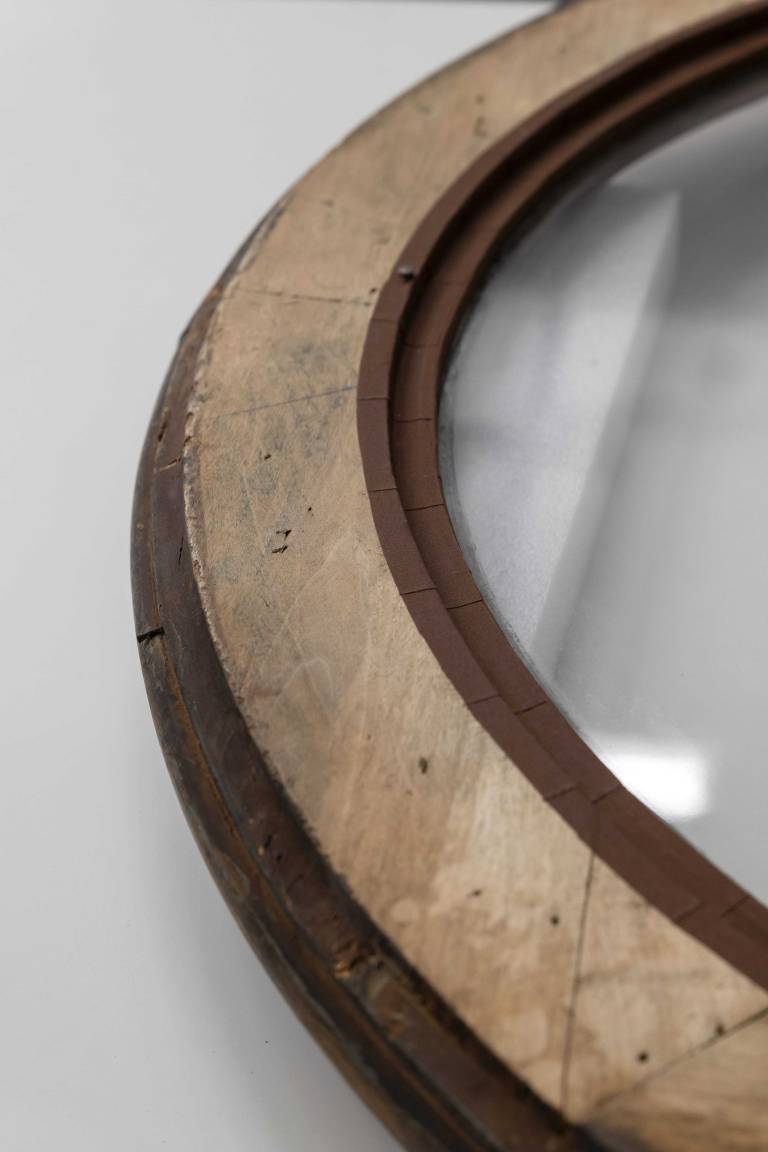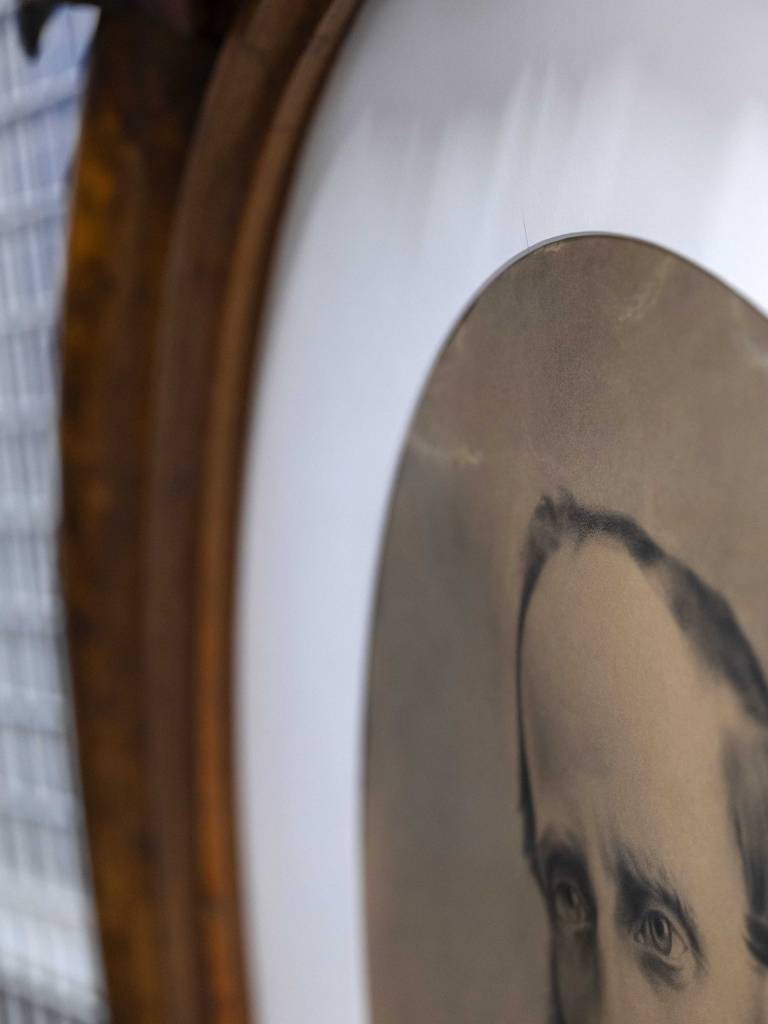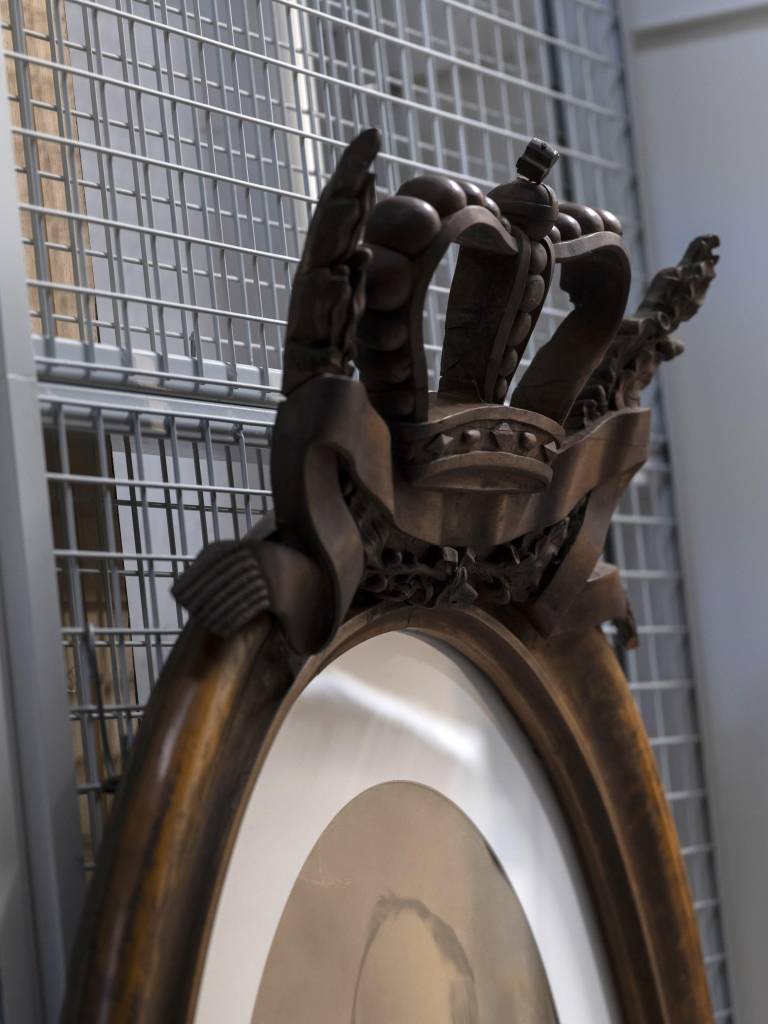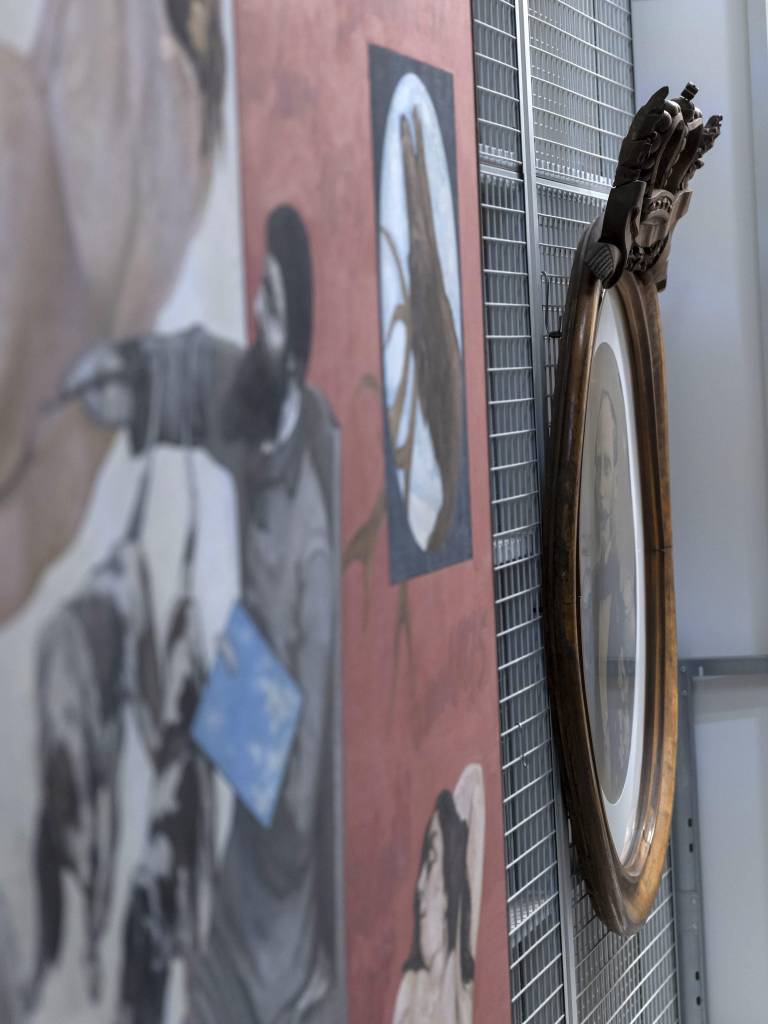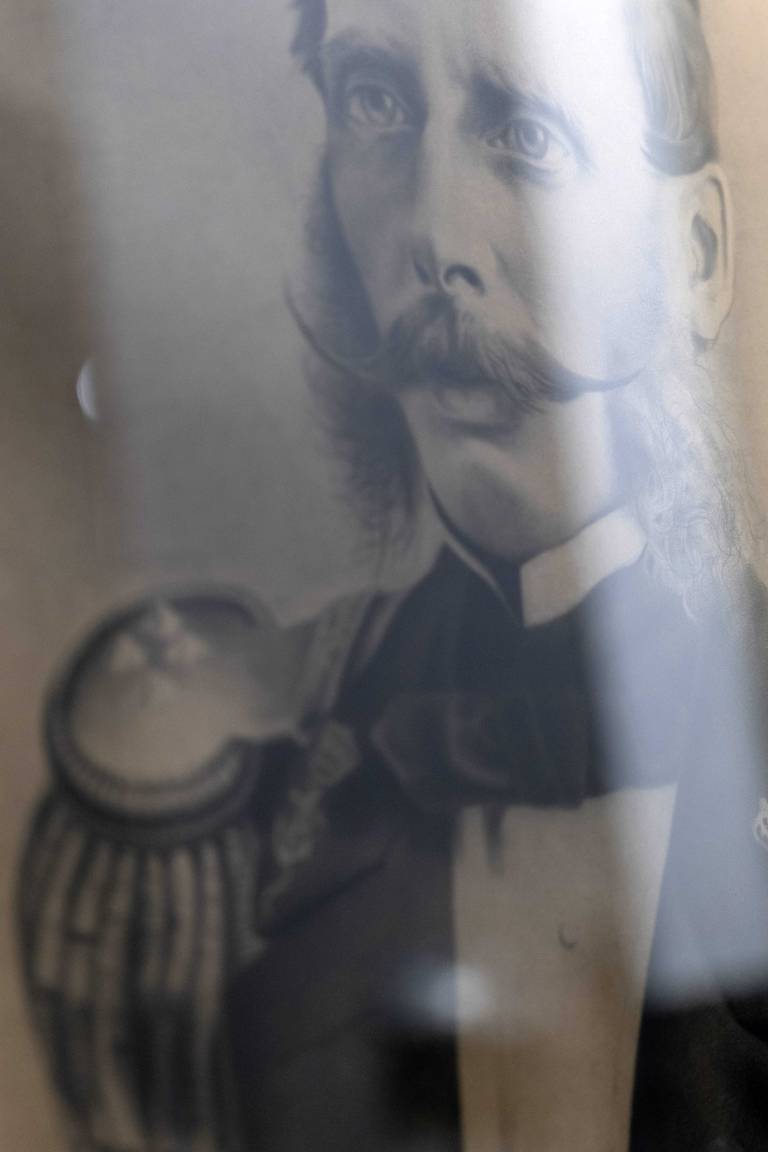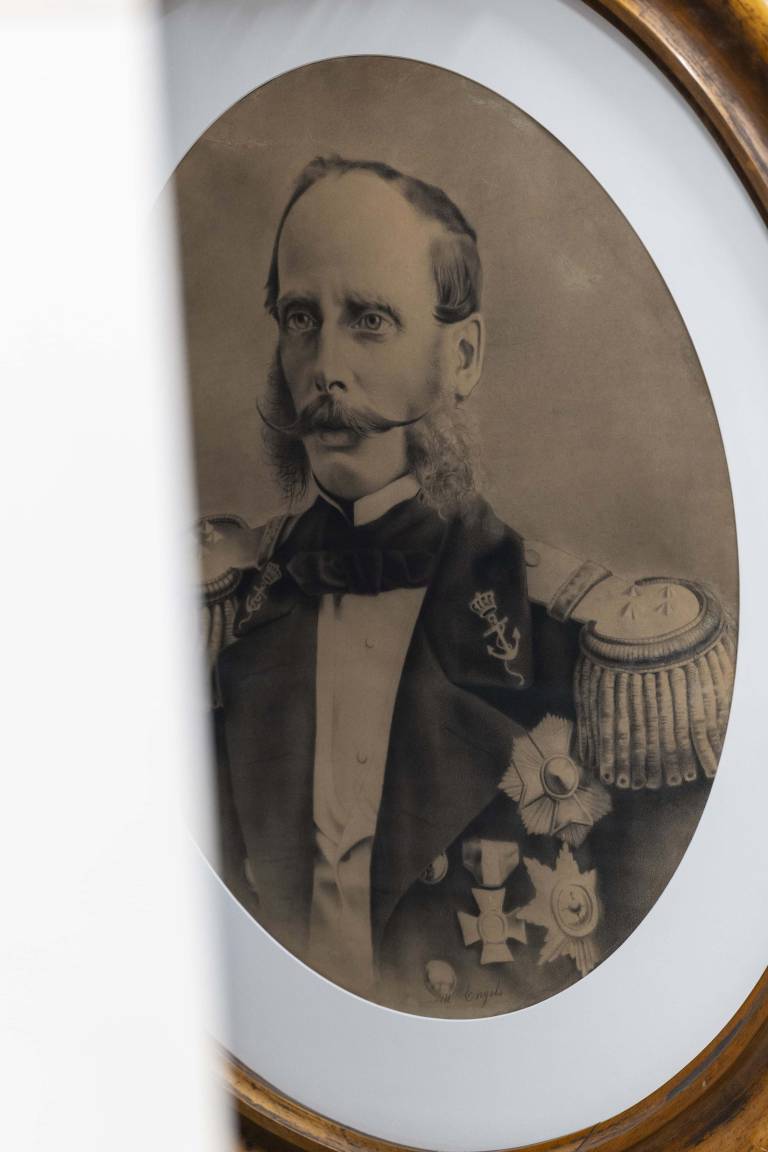While researching the new exhibition Luxemburger Bundeskontingent. Militär und Gesellschaft im 19. Jahrhundert at the Musée Dräi Eechelen, the curators of the show came across an oval portrait of Prince Henry of the Netherlands (approx. 1878) stored in our museum’s depot. This work by the Luxembourgish artist Michel Engels (1851-1901) was originally mounted in an elaborate oval wooden frame.
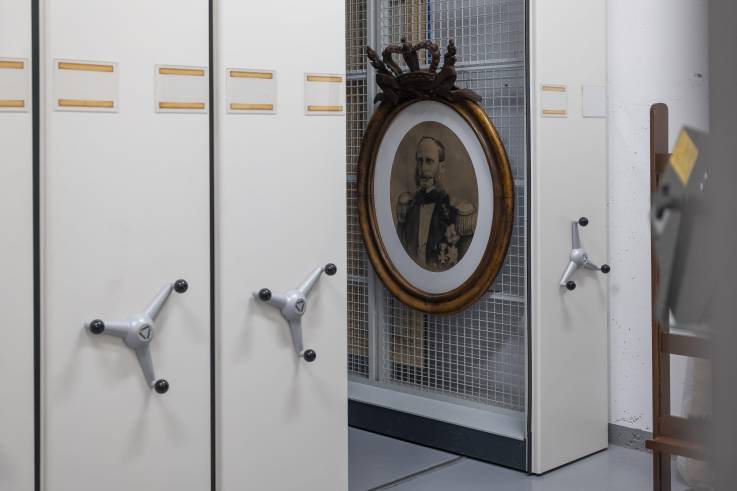
Before restoring the work, it was important to understand how the portrait was made. Although it was thought to be a drawing, certain details suggested it might have been created using a different method. The first layer of the image was made of charcoal and black chalk. When magnified, the paper fibers were clearly visible and the image was continuous in tone, covered by a coating which had a slight sheen and was made up of silver particles. The production period, the structure typical of salt prints and the charcoal in the portrait led us to conclude that the portrait is actually a crayon enlargement.
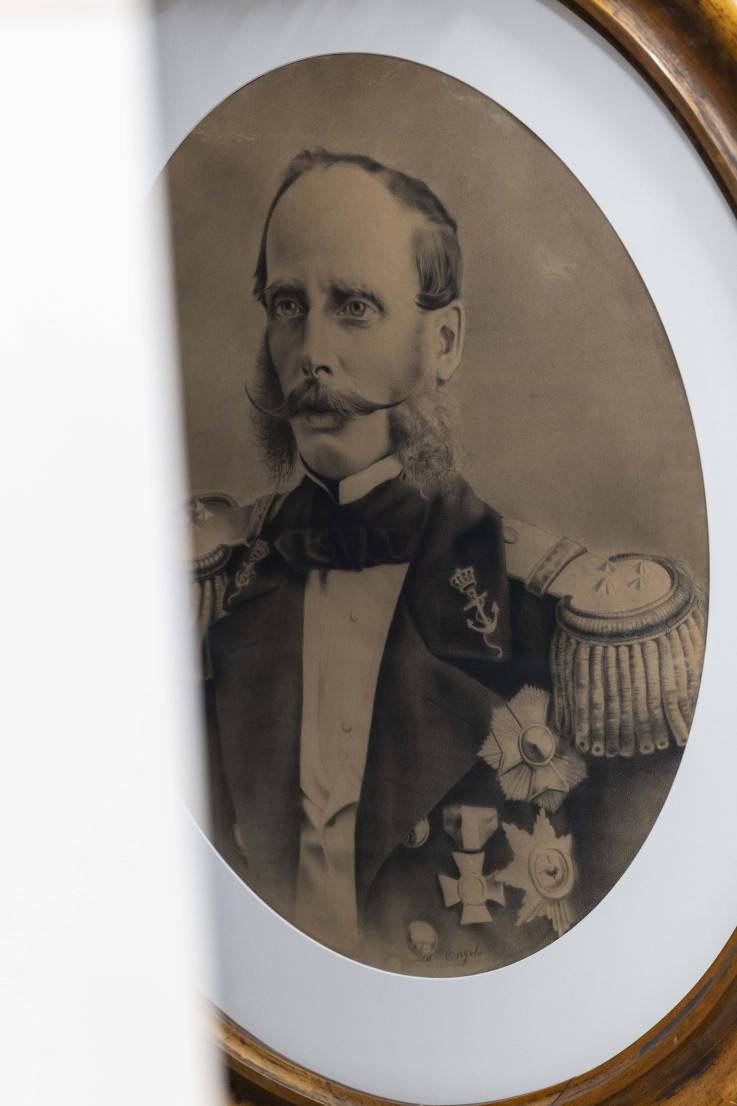
Crayon enlargements explained
Crayon enlargements, also known as crayon portraits, were a popular form of photographic art in the late 19th and early 20th centuries. For many people, it was the first affordable form of portraiture, offering a cheaper alternative to painted portraits. Crayon enlargements were the first photographic process that made it possible to produce large-scale images of people. The crayon enlargement process started with a low-quality photograph. Sometimes, the image was faded and sometimes it was sharp. The image was then drawn straight onto the photograph with pas-tels, chalks, watercolours or Conté crayons. This hid imperfections like scratches or tonal issues in the enlarged negative and made it look like a handdrawn portrait. Due to the poor quality of the paper, however, crayon enlargements become brittle over time, leading to distortions and tears in the image.
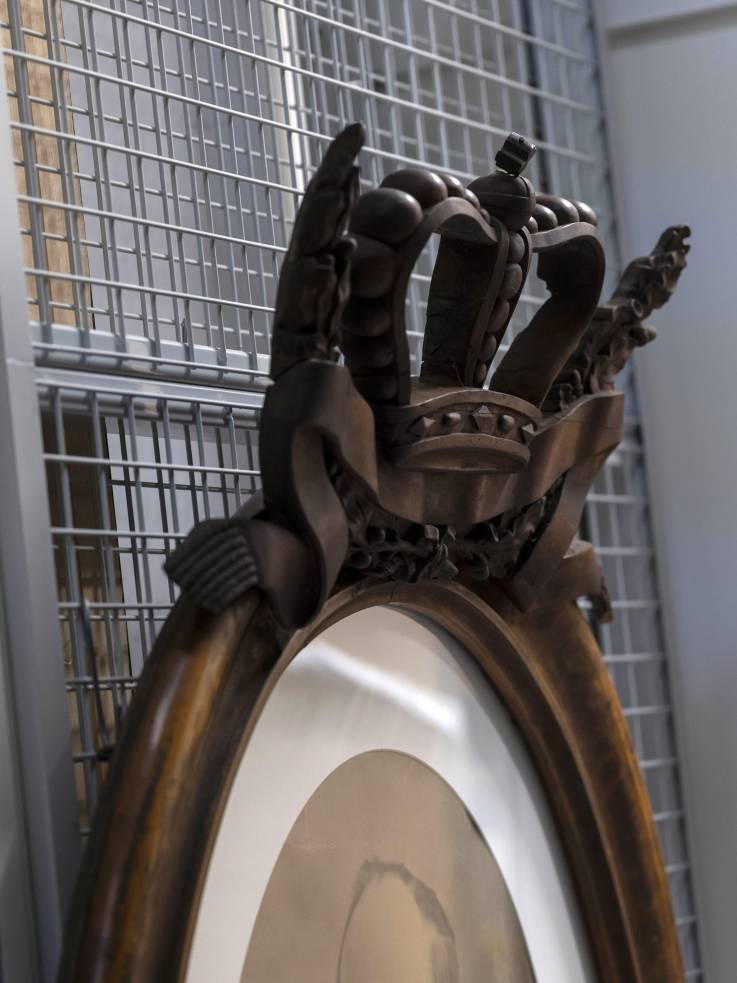
Prince Henry's makeover
The portrait of Prince Henry had various issues and was quite complex to treat due to its multiple layers and different materials. Besides being soiled, it was also domed and had many tears. This was because the edges were glued straight onto a wooden oval passepartout, which had warped and deformed the paper. Since the work was very fragile, we handled it carefully to avoid any further damage. After a gentle cleaning, we used blotter and absorbent textile washes to remove the portrait from the wooden frame. The adhesive on the paper was gently removed with a methylcellulose poultice. Additional dirt and acidity were removed with washing with blotters, after misting the front and back with distilled water. Tears were fixed with Japanese paper and wheat starch paste. The inpainting was done with watercolours and pastels, after filling in missing sections with cellulose powder and methylcellulose. The restoration treatment has not only given a new allure to the crayon enlargement, which has regained some of its original shape, but also slowed down its inevitable deterioration, preserving its historical and artistic value so it can be appreciated for many years to come. Since crayon enlargements were very popular in the late 19th and early 20th centuries, it would be interesting to see if other portraits in our collection, especially those by the same artist, were made using this technique. This could help with further research and ensure they are preserved properly.
Text: Francesca Vantellini | Images: Éric Chenal
Source: MuseoMag N° II - 2025
